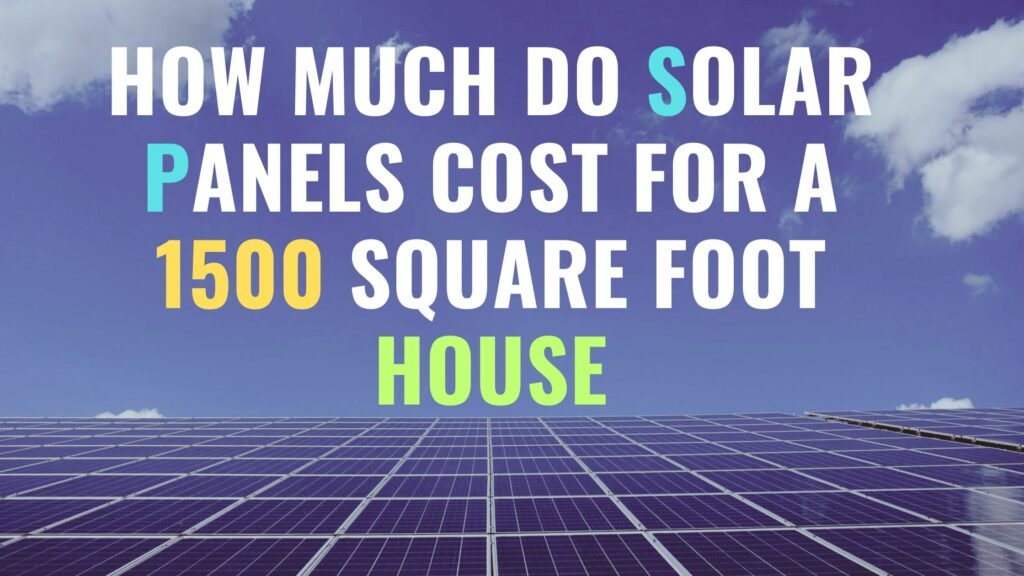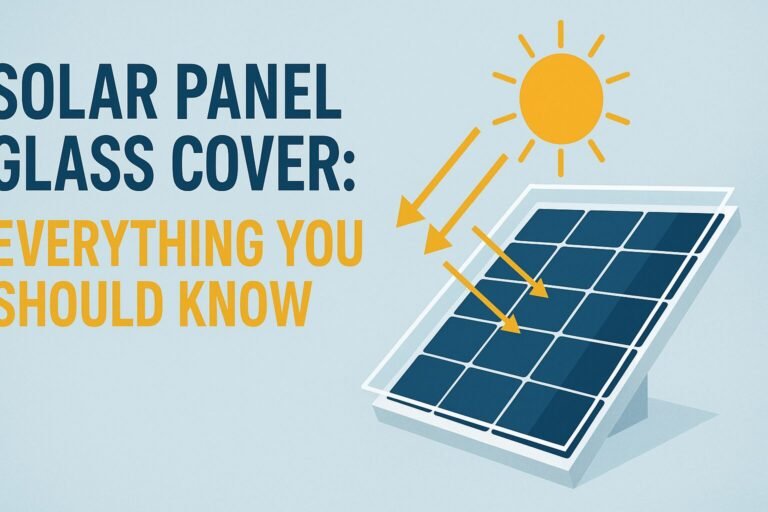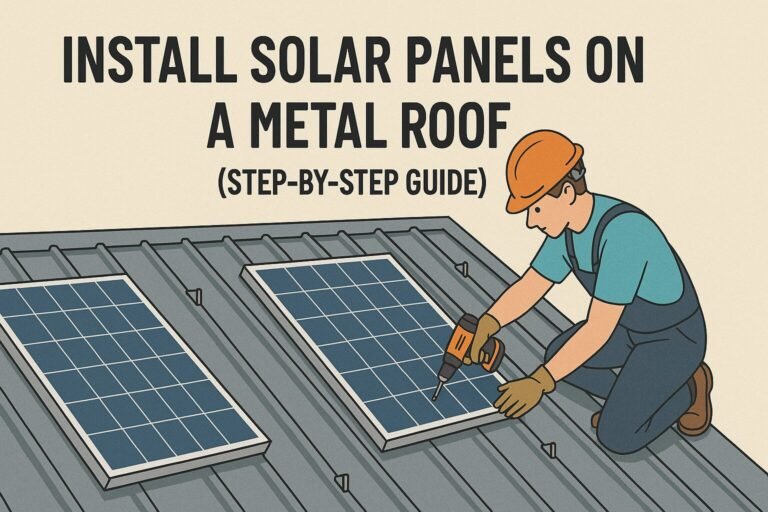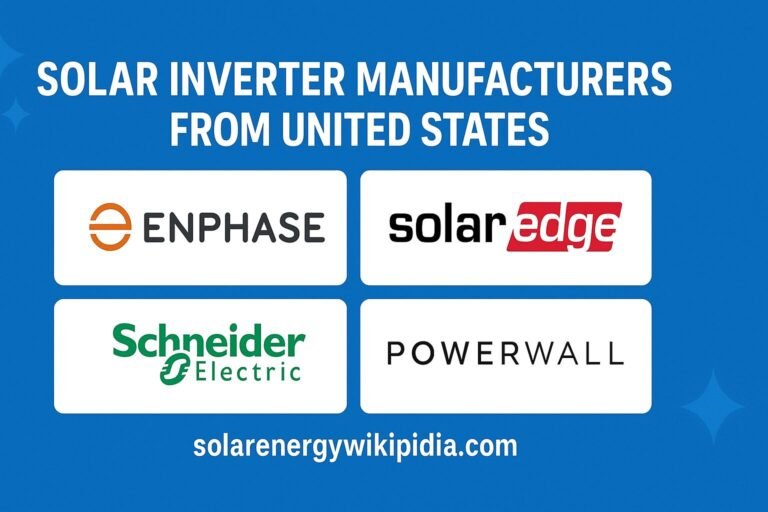
As a homeowner looking to cut energy costs and embrace sustainability, I know how important it is to understand the investment required for solar panels. One of the biggest questions I had was: How much do solar panels cost for 1500 square foot house? The answer depends on several factors, including my energy needs, system size, installation costs, and available incentives. In this guide, I’ll break down the estimated costs, system requirements, financing options, and long-term savings to help you make an informed decision just like I did.
Table of Contents
Understanding Solar Panel Costs
The cost of solar panels is influenced by multiple factors, including:
- Energy consumption: The more electricity you use, the larger the system you’ll need.
- Solar panel efficiency: Higher efficiency panels produce more power with fewer units.
- Location & sunlight availability: Areas with more sunlight require fewer panels.
- Installation complexity: Roof type, panel mounting, and wiring impact labor costs.
- Financial incentives: Rebates, tax credits, and financing options reduce the total cost.
System Size and Estimated Solar Panel Costs
The cost of solar panels is generally calculated based on energy consumption rather than home size. However, for a 1500 sq ft house, the average energy consumption in the U.S. is about 600-900 kWh per month. To cover this demand, homeowners typically need a 5kW to 7kW solar system.
Estimated Costs by System Size:

Prices vary depending on location, solar panel efficiency, and installation costs.
Breakdown of Cost for a Solar System for a 1500 Sq Ft Home
When calculating the total cost of a solar system, you need to consider various components:
- Solar Panels: $250 – $400 per panel
- Inverters: $1,000 – $2,000
- Mounting & Racking: $500 – $1,500
- Installation & Labor: $3,000 – $6,000
- Permits & Inspections: $500 – $2,000
- Batteries (Optional for Backup): $5,000 – $15,000
These costs fluctuate based on the brand, quality, and location of installation.
How Many Solar Panels Do You Need for a 1500 Square Foot Home?
The number of panels required depends on the system size and the efficiency of the panels.
Example Calculation:
- If using 350W panels, a 6kW system would need approximately 17 panels (6000W / 350W = 17.1).
- If using 400W panels, you would need around 15 panels.
Tip: High-efficiency panels require fewer units, saving space and potentially reducing installation costs.
Expected System Lifespans
Solar panels are a long-term investment, typically lasting 25-30 years with minimal degradation. Other system components also have varying lifespans:
- Solar Panels: 25-30 years (performance drops ~0.5% per year)
- Inverters: 10-15 years
- Batteries: 10-15 years (depending on usage)
Regular maintenance, such as cleaning and checking electrical components, can help extend lifespan.
Key Cost Reductions
To make solar more affordable, consider these cost-saving strategies:
- Federal Tax Credit: The 30% Investment Tax Credit (ITC) reduces costs significantly.
- State & Local Incentives: Many states offer additional rebates and incentives.
- Net Metering: Sell excess energy back to the grid and earn credits.
- Solar Loans & Leasing: Financing options reduce upfront costs.
- Group Buying Programs: Some communities offer bulk discounts for residents.
- DIY Installation: If you have electrical knowledge, installing some components yourself can cut labor costs.
The Long-Term Value of Solar Panels
Investing in solar panels can lead to significant financial benefits over time:
- Energy Savings: Homeowners can save $10,000 – $30,000 over 25 years.
- Increased Home Value: Homes with solar sell for 4% more on average.
- Environmental Impact: Reduces carbon footprint and reliance on fossil fuels.
- Protection Against Rising Energy Costs: Locks in energy costs for decades.
Protecting Your Investment
To maximize the lifespan and efficiency of your solar system:
- Regular Cleaning: Dust and debris can reduce efficiency.
- Monitoring System Performance: Many systems offer apps to track energy production.
- Warranties: Most solar panels come with 25-year performance warranties.
- Insurance Coverage: Some homeowner’s insurance policies cover solar panels against damage.
- Professional Maintenance Checks: Annual inspections help identify potential issues before they escalate.
Shopping for Solar: Getting the Best Deal
Follow these steps to ensure you’re getting the best value:
- Get Multiple Quotes: Compare at least 3-5 providers.
- Check Installer Credentials: Look for NABCEP-certified professionals.
- Read Reviews & Testimonials: Ensure quality and reliability.
- Ask About Warranties & Maintenance: Choose panels with at least a 25-year warranty.
- Compare Financing Options: Look into loans, leases, and PPAs.
- Understand the Contract Terms: Ensure there are no hidden fees or penalties.
FAQs About Solar Panel Costs for a 1500 Sq Ft House
1. Can I get solar panels with zero upfront cost?
Yes, many companies offer solar loans and leasing options that allow homeowners to install panels without an upfront payment.
2. How much do I save annually with solar panels?
On average, homeowners save $1,000 – $2,000 per year depending on electricity rates and system size.
3. Is maintenance expensive?
No, solar panels require minimal maintenance, usually just periodic cleaning and occasional system checks.
4. Do solar panels work in cloudy areas?
Yes, although solar panels are most effective in direct sunlight, they still generate electricity on cloudy days.
Final Thoughts about solar panels cost for 1500 square foot house
The cost of solar panels for a 1500 square foot house varies based on system size, location, and incentives. While upfront costs range from $12,500 to $21,000, tax credits and long-term energy savings make solar a smart investment. By understanding costs, financing options, and best practices, homeowners can maximize their return and enjoy clean, renewable energy for decades to come.
Thinking about going solar? Get quotes from multiple providers to find the best deal and start saving today!






1 thought on “Solar Panels Cost for 1500 Square Foot House Top Trend”